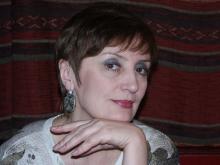Вы здесь
About iskan: Art Critics
Iskan is a passionate collector, a man of great creative verve and boundless spirit. We became acquainted several years ago, introduced by Natta Konysheva, a wonderful Moscow artist whose work I had discovered for myself in Paris back in the end of the 1980s. Our mutual interest in her work brought us closer. We would then see each other at Nice, Cannes and various venues elsewhere, for example at the excellent 2013 retrospective exhibition of Erik Bulatov at the Monaco New National Museum, which lent itself to a most rewarding discussion.
Why and how did Iskander, at a mature age, become an artist? There is no simple answer to this question. Perhaps, because he had for a long time felt a need for it. Each man is the creator of his own destiny and happiness. It is Iskan’s inexhaustible energy that makes his paintings so creatively expressive. The accent is placed on the asymmetry of composition, while the decorative ornamentation of lines and an unusual palette bring out his individuality and the force of his personality.
With all my heart wish Iskan further creative joy and success.
Iskan is an artist by God’s own grace. Or by Nature’s. Whichever one you prefer. What matters is that his art comes somewhere from the depths of Being, from the world of the subconscious which is through and through natural, organic and limitless in the possibilities of self-expression. There is nothing studied, labored or far-fetched. The artist doesn’t try to dazzle with hidden meanings or to show off his painterly technique. The thesis “painting is freedom” is fully realized in his works.
Abstraction? Subjectless art? Concretism? Whatever name we find for Iskan’s art won’t change its essence: it will remain mesmerizingly beautiful – beautiful in its openness to the viewer, in its vibrancy and lusciousness, in its absolutely natural foundation. In his artistic declaration, the artist says that Nature is his teacher, that it is the energy of the Sun that guides his brush and is captured in his canvases. It’s unlikely that anyone will argue with the fact that Iskan’s works exude energy. The energy of the Sun doesn’t necessarily have to mean the brightness of the palette. His paintings can be both clamorous and saturated or tender and laconic in their combination of pastel colors. But they always make one feel a powerful spurt of energy that is coming somewhere from Nature’s depths.
It should be noted that Iskan’s works are heterogeneous. In fact, they are very different. I think the reason for that is that he is in a continuing search of himself. Hence, the spontaneously arising need to use different techniques for in-depth self-expression. In him, we see both clear geometric planes that calmly, almost solemnly complete one another and the nervously vibrating fields interacting in a zigzag turbulence. Some of his works exhibit stately tranquility, others – a violent rebellion. Sometimes planes of color are supplemented with symbols. Rarely can there be seen clear figurative matter (“Orange Tennis Shirt,” “The Brush”). But even there figurativeness is of a symbolically abstract nature.
With Iskan we have a rare and joyful opportunity to see Art per se – the art of a most spontaneous artist who is, in a way, a symbol of Man’s Nature-given abilities.


